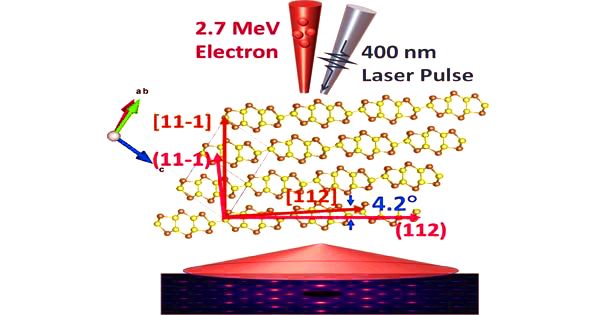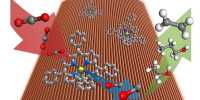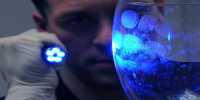A new Insights into Van Der Waals Materials Found
Since graphene was to be had via scotch tape, a big magnificence of van der Waals (vdW) layered materials has been researched intensively. Layered van der Waals materials are of high interest for electronic and photonic applications, according to researchers at Penn State and SLAC National Accelerator Laboratory, in California, who provide new insights into the interactions of layered materials with laser and electron beams. This study provides a generalized understanding of Friedel’s law and a comprehensive explanation of the lattice dynamics.
Two-dimensional van der Waals materials are composed of strongly bonded layers of molecules with weak bonding between the layers. They are served as electrodes, thermoelectrics, optoelectronics, substrates, and precursors for 2D materials.
The lattice dynamics of monoclinic gallium telluride (GaTe) is studied by ultrafast electron diffraction (UED). This study provides a generalized understanding of Friedel’s law and a comprehensive explanation of the lattice dynamics.
For the learn about, scientists used a mixture of ultrafast pulses of laser gentle that excite the atoms in a subject material lattice of gallium telluride, adopted via exposing the lattice to an ultrafast pulse of an electron beam. This displays the lattice vibrations in real-time the usage of electron diffraction and may result in a greater working out of those materials.
“This is a quite unique technique,” said Shengxi Huang, assistant professor of electrical engineering and corresponding author of a paper in ACS Nano that describes their work. “The purpose is to understand fully the lattice vibrations, including in-plane and out-of-plane.”
One of the attention-grabbing observations when it comes to their paintings is the breaking of a legislation that applies to all subject material techniques. Friedel’s Law posits that in the diffraction pattern, the pairs of centrosymmetric Bragg peaks should be symmetric, directly resulting from Fourier transformation. In this situation, the pairs of Bragg peaks display reverse oscillating patterns. They name this phenomenon the dynamic breaking of Friedel’s Law. It is an rare, if no longer unparalleled, remark within the interactions between the beams and those materials.
“Why do we see the breaking of Friedel’s Law?” she said. “It is because of the lattice structure of this material. In layered 2D materials, the atoms in each layer typically align very well in the vertical direction. In gallium telluride, the atomic alignment is a little bit off.”
When the laser beam shines onto the material, the heating generates the lowest-order longitudinal acoustic phonon mode, which creates a wobbling effect for the lattice. This can affect the way electrons diffract in the lattice, leading to the unique dynamic breaking of Friedel’s law.
This methodology may be helpful for finding out section alternate materials, which take in or radiate warmth all the way through section alternate. Such materials can generate the electrocaloric impact in solid-state fridges. This methodology may also be fascinating to those who learn about oddly structured crystals and the overall 2D materials neighborhood.















